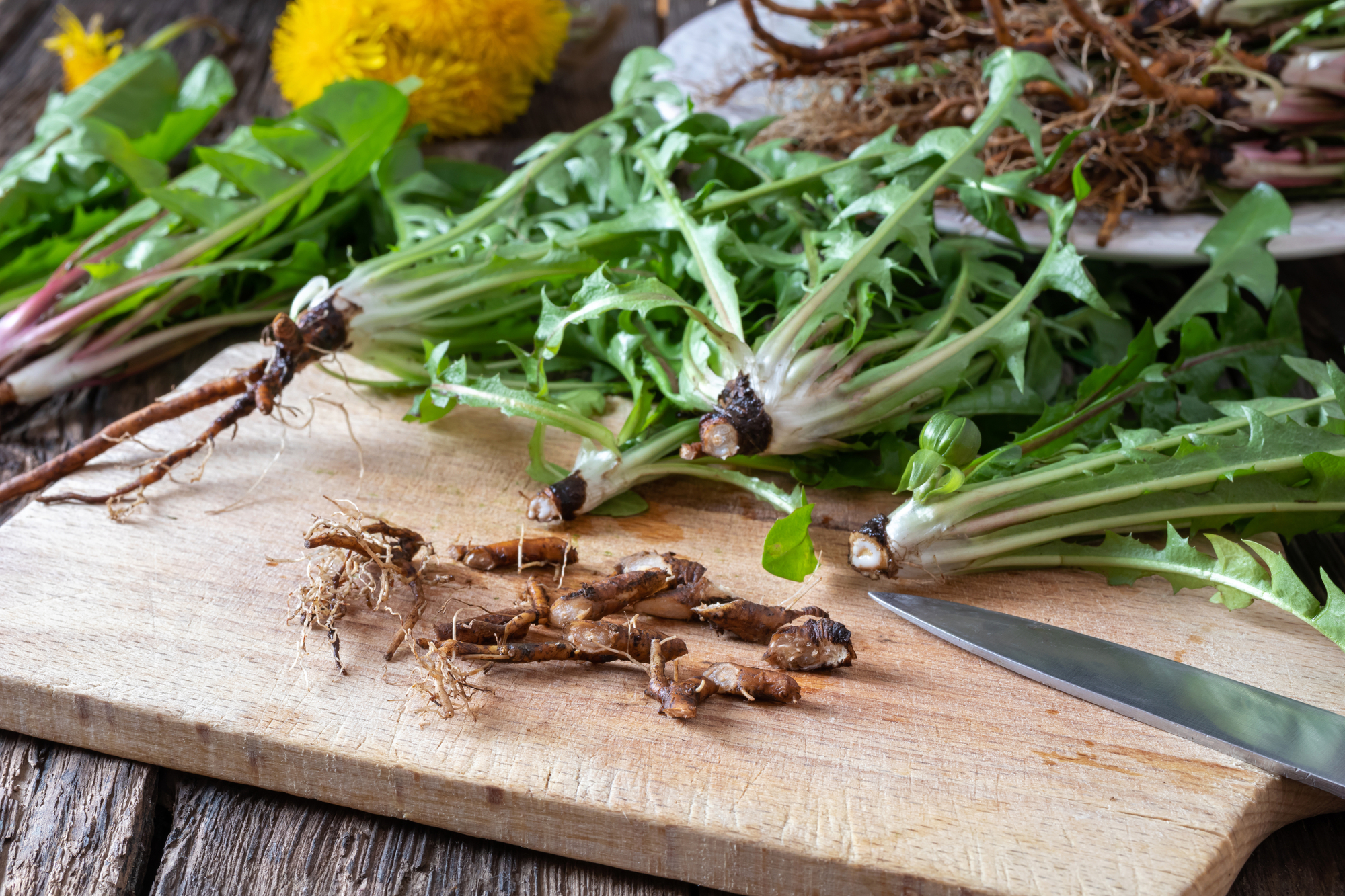Somewhere between childhood and adulthood, dandelions seem to lose their excitement. As kids, dandelions are abundant bright flowers to be picked, enjoyed, made into “stews” in the dirt, and enjoyed! Once an adult, or more specifically a homeowner, dandelions can suddenly become garden pests. Instead of plucking them to be admired, they’re tossed out with the weeds. There’s no denying the power of dandelions, though. Dandelions are known and grown around the world, and in today’s blog we’ll be reintroducing you to some of the magic of this beautiful plant, as well as some dandelion history.

What is Dandelion Root
Dandelion root is the root of the dandelion herb. Dandelions are made up of roots, stems, leaves, and flowers. Each part has a unique set of benefits and uses, and today we’ll be focusing on the roots.
History of Dandelion Root
Dandelion history is extensive, similar to its presence across yards and pastures globally. Dandelion root, or Taraxacum, is a well traveled plant. It is native to Asia and Europe, particularly China and India, and made its way to the Americas from the English. It has been loved and honored for many centuries, and has been used extensively for its various vitamins, minerals, and phytochemicals. [1]
Some of the first uses of dandelion have been found and recorded in the 10th and 11th centuries via ancient writings. Dandelion root was not only utilized, but purposely grown to aid in various ailments, cooking recipes, tonics, and more. [2] Imagine that! Gardens centuries ago, versus now, look quite different. Today, you can find pristinely landscaped front and back yards, whereas gardens back in the day were allowed to flourish. Whatever grew was a great fortune. What we now call weeds used to be a main source of medicine, and were gladly harvested alongside fruits and vegetables.
Uses of Dandelion Root
Dandelion is a bitter herb with many beneficial uses. According to modern standards, dandelion root is considered GRAS, or “generally recognized as safe”. [1] In ancient times, it was much more than safe, but considered supportive, and at times, a savior.

One of the many uses of dandelion root was for detoxification support. Our liver is one of our main detox pathways, and without modern medicine or supplementation, dandelion was a go-to detox remedy for centuries. [2] It was often made into a tea or tonic with various other herbs and spices to balance out the bitterness of raw dandelion. Tonics, like dandelion, are making a comeback, too. Before there were coffee shops on every corner, dandelion was used as the go-to natural diuretic and energy boost. [3] Dandelion root is also a natural prebiotic, aiding in the diuretic properties, and reducing its harshness the way coffee often interacts with the body. [4]
Aside from medicinal uses, dandelion was also used as a natural fertilizer. The vitamin and mineral content of this weed actually helps nourish the soil. Its presence was not only useful for various remedies, but to help a surrounding garden of produce and flora thrive. [5]
It’s clear that dandelion root uses span far and wide. Aside from herbal medicine and fertilizer, dandelion root is an enjoyable herb to incorporate into any diet. As you know, dandelion makes for a great coffee alternative. The natural properties of dandelion root also are great for making salves, mead and wine, and more.
Dandelion root is a rich, incredible plant that has helped and continues to help people around the world, to this day. Whether for overall support or to simply enjoy it, dandelion root is a staple in cultures around the world. We hope today’s blog has helped you rekindle some interest in the history of dandelion root, its many uses, and even spark some ideas on how to use it in your own home and kitchen.
Keep it Dandy!
To shop Dandy Blend and all our dandy offers, visit www.DandyBlend.com/shop.
*Disclaimer
Dandy Blend is not a supplement or medicine. Any health related questions or concerns, we always recommend consulting with your primary care physician.








